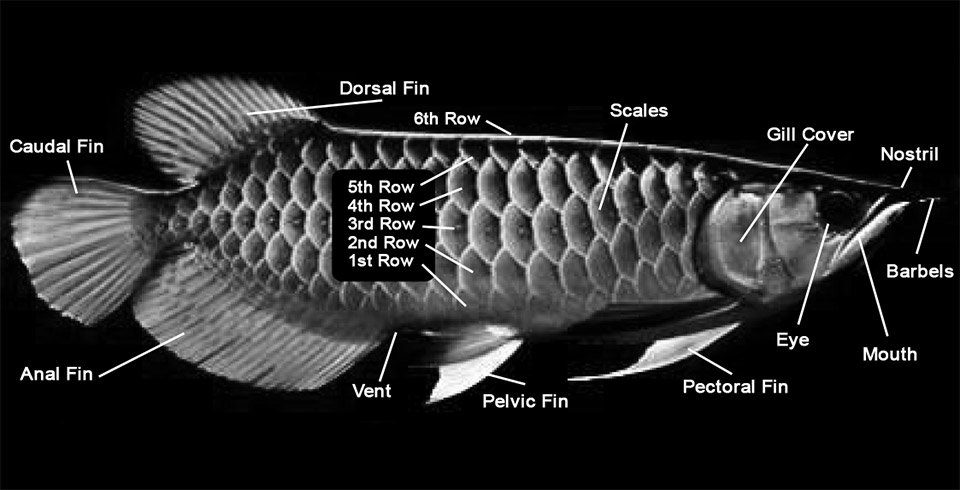Swimming posture
The Arowana should be gliding up and down the tank effortlessly and when it turns it should be very smooth and graceful. Its body should be exactly level horizontally when swimming, if it is not and it is at a slight angle it could mean a swim bladder problem. The fish are nearly always in the top 16 inches of the tank; make sure it stays there. Watch the fish as it moves. Its head should be very still with just the back half of the fish moving at all. If the fish is displaying a jerky or stiffness when swimming, this could be a sign of a sick Arowana.
Tail Fins, Pectoral Fins
Watch the Arowana as it swims, are the fins at the tail spread open and are the fins at the front widespread? Fish that have their pectoral fins too close together at the front should not be bought. The color off all the fins must dark when you look directly at them with even fin rays. One thing to also consider is that some species of Arowana (like the Cross Back) have much smaller fins so don’t be put off by that.

